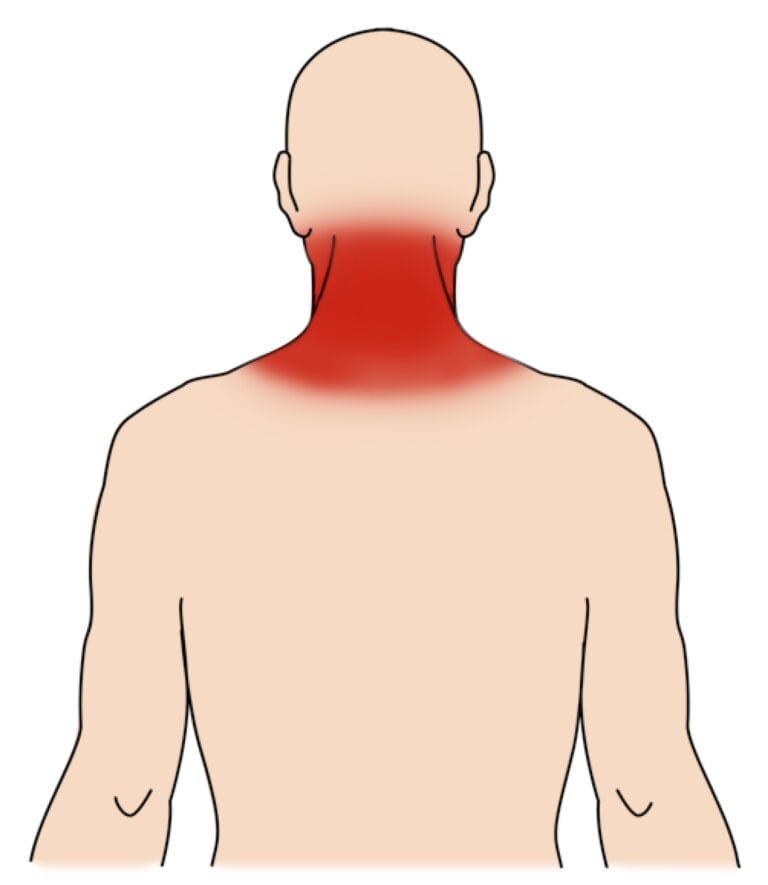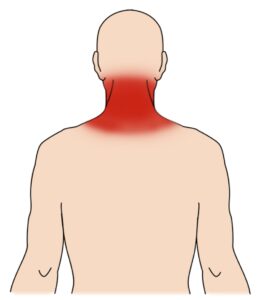Rephrased Paragraph
Neck ligament sprains or muscle strains often result from injuries that force the neck to bend or twist beyond its normal range. Pain from a neck sprain may vary in intensity and isn’t always immediate; symptoms can appear hours later or even the following day. For this reason, it’s important to consult a healthcare provider after a neck injury, even if there is no initial discomfort, to ensure proper evaluation and early intervention if needed.
Anatomy
The cervical spine, consisting of seven vertebrae in the neck, is supported by ligaments and muscles that function like robust rubber bands, stabilizing each vertebra. These tissues provide stability while intervertebral discs absorb shock, helping protect the spine during various movements.
Cause
A neck sprain or strain occurs when sudden, forceful movements—such as those in car accidents or severe falls—stretch or strain one or more soft tissues in the neck, causing an abnormal bend or twist. A common example is “whiplash,” where the neck quickly jerks forward and backward, often due to rear-end vehicle collisions.
Symptoms
Symptoms of a neck sprain vary but may include:
- Pain at the back of the neck that worsens with movement
- Delayed pain, typically peaking a day or so post-injury
- Muscle spasms and shoulder pain
- Headache at the base of the skull
- Increased irritability, fatigue, trouble sleeping, and difficulty focusing
- Numbness or tingling in the arm or hand
- Neck stiffness or reduced range of motion in various directions
- Weakness in the arms
This version maintains the original scientific accuracy while enhancing readability and SEO alignment.
Illustration shows the typical area of pain from a neck sprain.
Warning Signs
Certain symptoms may signal a more severe neck injury, and immediate medical attention is recommended if neck pain is:
- Constant and unrelenting, with no improvement over time
- Severe and unresponsive to over-the-counter pain relievers
- Paired with pain that radiates down the arms or legs
- Accompanied by headaches, numbness, tingling, or weakness in the arms or legs
This revision preserves the medical details and enhances clarity while considering SEO optimization.
Doctor Examination
Physical Examination
To identify a neck sprain, your doctor will conduct a thorough physical examination, which includes:
- Discussing the details of how the injury occurred
- Assessing your neck’s range of motion
- Checking for specific areas of tenderness
Imaging Tests
- X-rays. Although X-rays cannot capture soft tissues like ligaments and muscles involved in neck sprains, they are useful for ruling out other serious causes of neck pain, such as fractures, dislocations, or arthritis.
- Other imaging tests. Depending on your symptoms, your doctor may request a CT scan or MRI to gain a more detailed view of your injury.
Treatment
Neck sprains and strains are generally treated in a similar way to sprains in other areas of the body, with gradual healing over time through appropriate care:
- A soft neck collar may be recommended to support your head, alleviating pressure on the ligaments as they heal.
- Over-the-counter pain relievers, like aspirin, acetaminophen, ibuprofen, or naproxen, can help manage pain and reduce swelling.
- Muscle relaxants may be prescribed to alleviate spasms.
- Applying an ice pack for 15 to 30 minutes multiple times a day for the first 2 to 3 days can reduce inflammation and relieve discomfort. Use a cloth or towel to protect the skin from direct ice contact.
- Moist heat may help relax tight muscles, but it should be limited to no more than 20 minutes at a time.
Additional treatments may support recovery as your injury heals, but they should be initiated under your doctor’s supervision. These options include:
- Gentle massage of sore areas
- Ultrasound therapy
- Cervical traction for neck support
- Aerobic and isometric exercises to strengthen muscles without movement
- Structured physical therapy
Recovery
Most symptoms from a neck sprain or strain resolve within 4 to 6 weeks, although more severe injuries may require additional time for full recovery.
For those who injure their neck in sports, it’s essential to wait until symptoms are entirely gone and receive clearance from a doctor before returning to competition.
This revision is crafted to maintain scientific accuracy while enhancing readability and aligning with SEO principles.






